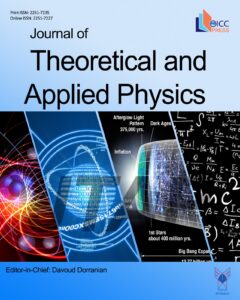Influence of chemical properties of liquid environment on the physical characteristics of laser ablation produced tungsten nanostructures
Authors
Abstract
Impacts of the liquid environment on the characteristics of pulsed laser ablation (PLA) synthesized tungsten (W) nanostructures have been investigated. High purity W target was irradiated by the fundamental wavelength of a Q-switched Nd:YAG laser of 7 ns pulse width and 1 J/cm2 laser fluence in different liquid environments including distilled water, ethanol, acetone, and cetrimonium bromide (CTAB) solutions. Structural, chemical, and optical properties of W nanoparticles (NPs) were characterized by different spectroscopic and imaging techniques. FTIR spectra indicate the formation of a bond between W and O in the synthesized NPs, and XRD patterns confirm producing W and WO3 composite NPs in all liquid environments. The excitonic/plasmonic absorption peak of W/WO3 NPs were occurred in the absorption spectra of all samples. The largest particles with the lowest adhesion were synthesized in acetone solution, and adding CTAB surfactant to distilled water reduced the adhesion of NPs as is depicted by FESEM. TEM images confirm the formation of core-shell W/WO3 nanostructures in distilled water. The PL spectra present band-to-band transitions and oxygen vacancies of WO3.




